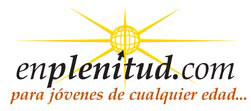|
www.saeculii.com
If you don’t already have one, start by developing a translation methodology. A methodology will enable you to translate more efficiently and accurately. For example:
- Read the original carefully
- Research the subject
- Translate the work
- Compare with the original
- Edit (proof) the translation
- Sleep on the product
Read the Original: Read the original text thoroughly paying attention to the style of writing employed by the author. Is the author´s style light-hearted, positive, forceful, truthful, or sincere, etc.? to rephrase, determine where the author is “coming from”. Once you have successfully put yourself in the author´s mind, emulate the author´s style in the translation. This simple act will make your product an extension of the author´s work. This, indeed, is professional translation. It is smooth, seamless and natural.
Research the subject: Not enough can be said about research-good research. Less than 60 minutes of research on the translation subject really does make all the difference to the finished product. Use the internet extensively. Research free dictionaries, encyclopedias, informational sites, case studies and white papers. Look for recent articles on the translation subject you will be translating. The internet is the greatest resource since the invention of the library, with one flaw. Anyone can publish anything without due process (authentication). So you need to use the internet wisely! Corroborate your research with multiple, trusted sources.
Research the author: Researching the translation subject will definitely go a long way to improving your style but researching the author will provide luster to your style. Get an insight to the author´s life. Search for the author by name, research biographies or autobiographies, and research other work that has already been published by the author. Knowing your author will provide in-depth knowledge about his or her own private and personal feelings, reflections and experiences.
Authoritative Knowledge: is the technical, or subject matter, expertise one possesses on a specific field. Specializing in specific fields in which you are genuinely an expert on terminology, in both languages, adds weight to your style.
Translate the work: Translate into your native language! Translating into a non-native language will generally suffer from deficiencies in style, you will make more spelling and grammatical errors. Regional variations within the same language need to be reflected in your translation also. American English is not the same as British English, and not the same as Australian English or south African English. The difference between cultures and countries is significant, professional translators make the effort to be aware of regional language differences. Culture does factor into translation.
Know your limits. Translation encompasses a huge field of subjects. If you think of all the material that requires translation you will soon realize that this encompasses the collective body of human knowledge. Some people are just incredibly gifted and seem to soak up whatever subject they are exposed to.
Context is important. Disregard for translating “in context” has given rise to the expression “lost in translation”. In your native language, most words have multiple meanings, so try to get the general idea of what the author wants to say and not to lose the meaning of the context.
Simple is best. Never has an adage been more applicable to the profession of translation –a simple translating style, like writing and just about everything else, is powerful and convincing. Always use succinct, easily understood language that complements the author´s style writing. Short, well formed sentences that adhere to the rules of grammar and are devoid of complex terms are better. Slang and clichés do not translate well between most languages.
What is not written is as important as what is written. Knowledge of the author and authoritative knowledge will provide you with the background information to see past the physical, or written text. Admittedly, this is difficult and being able to convey the hidden meaning without putting it in print is the mark of an accomplished translator.
Ask the Questions. Clients know that professional translators literally analyze text from every conceivable angle. If something the original text does not sound right, seek clarification with a timely question. Your client will appreciate your professionalism.
Compare with the Original: When you have finished the translation, place the source text on the left and the target text on the right, side by side. Then, slowly and methodically, one line at a time, read over the source text and then the corresponding target text. By employing this methodology, you will easily be able to catch mistranslations and omissions. Correct any discrepancy in the translation right away.
Edit (proof) the translation: In this step your focus should be on the technical (grammatical) errors. Eliminate one group of errors at a time. Professional language translators will have someone that is not too close to the project to do so (for example, someone that has not worked on the project at all) to do the proofreading. If you not have an assistant, then distance yourself from the project for a while. Sleep on it! Omitted words are not translated. In the English language, much is implied and therefore omitted. There are numerous other words, such as particles (“the” that are often omitted in English. Indeed, all languages have these grammatical “quirks” that are ill-defined. The simple rule to follow is that if you are not sure, then do not omit it. Acronyms can be misleading Take ASAP for example, everyone knows that ASAP stands for “as soon as possible”, but according to the acronym finder, asap can have roughly 90 definitions. The definitions of acronyms vary from language to language. Avoid using acronyms in your translations, or if you do, provide the definition.
Check the number, dates, names, and times twice. When deadlines are short, it is easy to confuse numbers, dates, and times especially when different formats are required. Consistency Rules: your writing style should be creative and varied. The technical aspect of your style, however, must be consistent. If you have adopted a particular word or phrase for a term, ensure that you consistently use the same term throughout. For example, if you use the term aircraft, do not alternative use then the term plane, airplane, of flying object, be consistent throughout the whole translation.
Sleep on the product: Sleep on the project or go for a walk, listen to music and then go back to the work. You will be amazed at the clarity of mind with which you round off your translation project!. Now, put your thesaurus to work. Identify words in the translated text that can be replaced with alternative, better words. This is also a good place to be creative.
Author: Ivan Vandermerwe, CEO of Saeculii, LLC. Saeculii Professional Translation Service.
|



